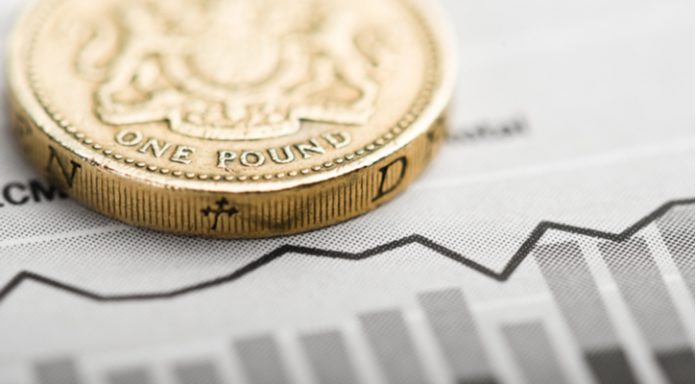Disappointing UK inflation numbers on Wednesday pulled the pound southwards versus the dollar, in early trade, to a low of $1.3058. The pound made up some of the lost ground later in the day, as the dollar weakened on shocking housing starts data.
| What do these figures mean? |
|---|
|
When measuring the value of a pair of currencies, one set equals 1 unit and the other shows the current equivalent. As the market moves, the amount will vary from minute to minute. For example, it could be written: 1 GBP = 1.28934 USD Here, £1 is equivalent to approximately $1.29. This specifically measures the pound’s worth against the dollar. If the US dollar amount increases in this pairing, it’s positive for the pound. Or, if you were looking at it the other way around: 1 USD = 0.77786 GBP In this example, $1 is equivalent to approximately £0.78. This measures the US dollar’s worth versus the British pound. If the sterling number gets larger, it’s good news for the dollar. |
UK inflation unexpectedly remained constant in June at 2.4% year on year. Analysts had been expecting inflation to tick up to 2.6%. Whilst higher prices at the petrol pumps and a weaker pound supported higher inflation, cheaper house prices and summer clothing sales acted as a downward pressure on inflation. Core inflation which excludes more volatile items such as food and fuel dropped to 1.9% year on year, down from 2.1% in May.
With UK inflation at a 1 year low and wage growth slipping, the Bank of England (BoE) could find justifying an interest rate rise in August a problem. With the weaker inflation sowing a seed of doubt as to whether the BoE will hike rates, the pound fell lower.
| Why do raised interest rates boost a currency’s value? |
|---|
| Interest rates are key to understanding exchange rate movements. Those who have large sums of money to invest want the highest return on their investments. Higher interest rate environments tend to offer higher yields. So, if the interest rate or at least the interest rate expectation of a country is relatively higher compared to another, then it attracts more foreign capital investment. Large corporations and investors need local currency to invest. More local currency used then boosts the demand of that currency, pushing the value higher. |
Today the busy economic calendar continues. Retail sales will be the central focus. With wage growth now just slightly higher than inflation, consumers remain under considerable pressure, which could mean they spent less in June. Analysts are expecting retail sales to have declined slightly to 3.7%, down from 4% in May. Retail sales numbers give an indication to future inflation. A weaker reading today could raise further doubt over a rate rise in August. In this scenario the pound could fall.
US Housing Market Slows Considerably
After a strong start to the previous session, the dollar dropped after data showed home building dropped to a 9-month low in the US. Housing starts declined by a huge 12.3% in June, significantly below the 2.3% decline analysts anticipated. This is biggest decline in since 2016 and is a sign that pressures exist on both the supply side and the demand side. Whilst constructors complain of rising costs, potential buyers are being priced out of the market with increasing interest rates and rising house prices.
| Why does poor economic data drag on a country’s currency? |
|---|
| Slowing economic indicators point to a slowing economy. Weak economies have weaker currencies because institutions look to reduce investments in countries where growth prospects are low and then transfer money to countries with higher growth prospects. These institutions sell out of their investment and the local currency, thus increasing supply of the currency and pushing down the money’s worth. So, when a country or region has poor economic news, the value of the currency tends to fall. |
As trade war rhetoric has all but disappeared for the time being, investors will continue to focus on the economic calendar. Today jobless claims could cause some volatility.
This publication is provided for general information purposes only and is not intended to cover every aspect of the topics with which it deals. It is not intended to amount to advice on which you should rely. You must obtain professional or specialist advice before taking, or refraining from, any action on the basis of the content in this publication. The information in this publication does not constitute legal, tax or other professional advice from TransferWise Inc., Currency Live or its affiliates. Prior results do not guarantee a similar outcome. We make no representations, warranties or guarantees, whether express or implied, that the content in the publication is accurate, complete or up to date. Consult our risk warning page for more details.
This article was initially published on TransferWise.com from the same author. The content at Currency Live is the sole opinion of the authors and in no way reflects the views of TransferWise Inc.





